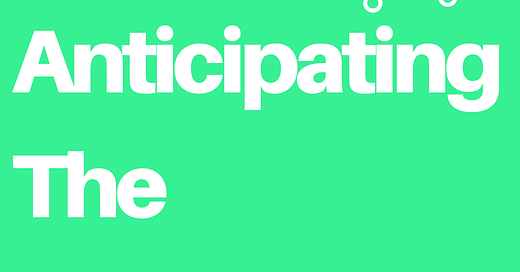This newsletter is really a public policy thought-letter. While excellent newsletters on specific themes within public policy already exist, this thought-letter is about frameworks, mental models, and key ideas that will hopefully help you think about any public policy problem in imaginative ways. It seeks to answer just one question: how do I think about a particular public policy problem/solution?
Welcome to the mid-week edition in which we write essays on a public policy theme. The usual public policy review comes out on weekends.
PS: If you enjoy listening instead of reading, we have this edition available as an audio narration on all podcasting platforms courtesy the good folks at Ad-Auris. If you have any feedback, please send it to us.
- RSJ
The farmers protesting against the three new farm laws (“Farm Laws 2020”) have entered into the seventh round of negotiations with the Union government. We have discussed these laws a few times here, here and here. For a moment, leave the laws aside and focus on the protests. Not the conspiracy theories about who is funding them and what their ‘real’ agenda is. But on how protests work. I had a few questions as I thought about them.
Why do some issues generate protest over others?
Take the last couple of months in India. We have the new farm laws that seek to open up the markets for farmers to freely sell their produce. The economic conditions of our farmers under the APMC mandis and MSP regime need no retelling. The new laws are new only for India. In most parts of the world, this is normal. Yet we have protests that have built up quite a steam.
Now contrast this with the Prohibition of Unlawful Conversion of Religion Ordinance that the UP Assembly passed in November. This so-called love jihad law is being sought to be replicated in other states like Himachal Pradesh, MP, Haryana and Karnataka. The provisions under these laws (which are quite similar across the states) fly in the face of the fair, liberal and democratic order that India has enshrined in its constitution. There is a subversion of the individual right to freedom of religion, free will and of the fundamental legal principle on who bears the burden of proof. And it isn’t as if there weren’t existing laws to curb forced mass conversions in these states. These laws have only one purpose – to strengthen the strawman about a global Islamic conspiracy to turn India into a Muslim majority state. Demographics, arithmetic, or logic militate against this strawman. But the strawman has been created and now it is about demolishing it to prove the effectiveness of the regime.
So, what explains the absence of any mass protests against questionable love jihad laws while there are protests against farm laws that most political parties had in their manifestos in the past?
There are two possible reasons for this. First, for any protest to start there is a need for a core group that feels aggrieved by an issue and questions the fairness of the actions of the state or the society. Both the points are critical – a sense of hurt and a moral basis to question the action that has created it. Second, the core group has to have a long-held common identity that’s clearly defined. It isn’t an identity that has been formed only because of the issue on hand.
Now let’s use this to look at love jihad laws.
Is there a core group that’s aggrieved by this? Muslim youth? Not really. The idea that there’s an organised group of Muslims being trained to woo Hindu girls in some kind of love academy and then sent out to marry them and Islamise India is in the realm of fantasy. As a strategy, it’s plain stupid with high investment and low returns. There’s no ‘superhit formula’ for wooing girls and Hindu girls aren’t waiting to be picked while having no agency of their own. So, there won’t be any Muslim or Hindu protest against these laws. As an aside, this was different in case of the Citizenship Amendment Act. There you had a core group (of Muslims citizens) who had a reason to be aggrieved and a moral basis to protest. On love jihad laws, the only group aggrieved would be those who believe in liberal values of freedom and justice. They will question the fairness of it. But does this group of ‘liberals’ have a long-held common identity? Not exactly. Most liberals can’t agree on the definition of liberals itself, forget about forging a common identity. So, don’t expect mass protests against a genuinely bad law anytime soon. Also, expect more of such laws in future that play the dog-whistle to the base without any protests from any group.
Things are a bit different with farm laws.
There’s a core group of farmers in Punjab and Haryana (and possibly in western U.P.) that benefit from the MSP regime who are agitated by these laws. That they – farmers whose toil ensures food on our table – are being given short shrift gives them a moral basis to protest. Finally, as farmers, they have a common identity around which they have organised, politically or otherwise, on numerous occasions in the past. So, you will have protests from this group.
That brings us to the next question.
What creates momentum for a protest?
Protests are started by a small, core group of protesters. The economic rationale is simple. The costs of protesting – organising, the opportunity cost of time and the likely threat of state violence – is weighed by them against foregoing existing benefits or incurring new losses (tangible or intangible). The initial group of protesters tend to be those who stand to lose the most. This loss outweighs the costs especially the threat of state violence which could be high for a small band of initial protesters. As the protest gets going, a positive network effect comes into play. Every new member joining the protest has a lower marginal cost than the previous member since the costs of organising and of state violence is now spread over more people. But the benefits remain the same. Or increase because the probability of a protest being successful increases with more members joining it.
The positive network effect is relatively easier to create in the radically networked societies we inhabit now. Once the costs and benefits are articulated clearly, the dissemination costs through social media can be almost zero.
Two other factors influence the momentum.
One, the ability of protesters to broaden their support base without diluting the focus of their objectives. This is a delicate balance and often protests fail in treading this line. Not broadening the base runs the risk of the momentum of protest fizzling out eventually since the state can play the patience game for longer than protesters. But adding too many allies who might bring in their own issues into the mix and then speak in multiple voices can derail the original cause of the protest. The great mass protests of Indian independence (Non-cooperation or Quit India movements) are fine examples of getting this balance right. Two, the ability of the state to run a counter-narrative about the protest and undercut the support base. The democratic states aren’t usually great in doing this since their response time is significant when compared to the speed of a radically networked group. However, a more authoritarian state can compete with a counter-narrative through mainstream media and through its own radically networked base which is ready and can respond quickly.
The current farmers’ protest has two problems in creating momentum. The positive network effect hasn’t taken shape in states beyond Punjab and Haryana. A likely reason for this is the benefits of the APMC and MSP regime are restricted to those two states while farmers from other states don’t have any incentive to protest against the new laws. The other reason is possibly the poor articulation of the grievances of the farmers and its broadcast to the farmers across the country. This scenario is unlikely in current times of social networks.
Finally, what does it take to make a protest successful?
The state responds when the continuation of the protest threatens its core interest of perpetuating itself. The size and the spread of the protest could reach a critical mass in the calculation of the state where it could threaten a regime change. Or the protest derails the lives of ordinary citizens who then turn against the state. Reasonable states will act in advance of such a scenario. In most cases, the state partly accepts the moral basis for protests and arrives at a reasoned compromise or it lets it counternarrative undercut the protest and let time take its own course. Only in rare cases does a state accept the moral basis of the protest and go back on its stand.
The protests we have seen in recent times (CAA, Article 370, farm laws) have seen this government use the counternarrative effectively. In fact, more than any other time in the past, this strength of the current regime will render most street protests ineffective. The protest on farm laws is a bit tricky since farmers account for 40-50 per cent of the voters in most states and have a history of mobilising themselves during elections. The narrative created in favour of the farm laws is strong and the limited appeal of the protests in other states has meant the government has stalled the protesters with multiple rounds of talks. Considering the limited geographic spread of the protests, the likely conclusion to these talks could be a few concessions made in the laws for these states. A full repeal of these laws is unlikely unless a groundswell of support for the protesters that’s so far missing emerges in the next few weeks.
HomeWork
Reading and listening recommendations on public policy matters











Share this post